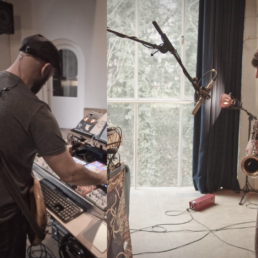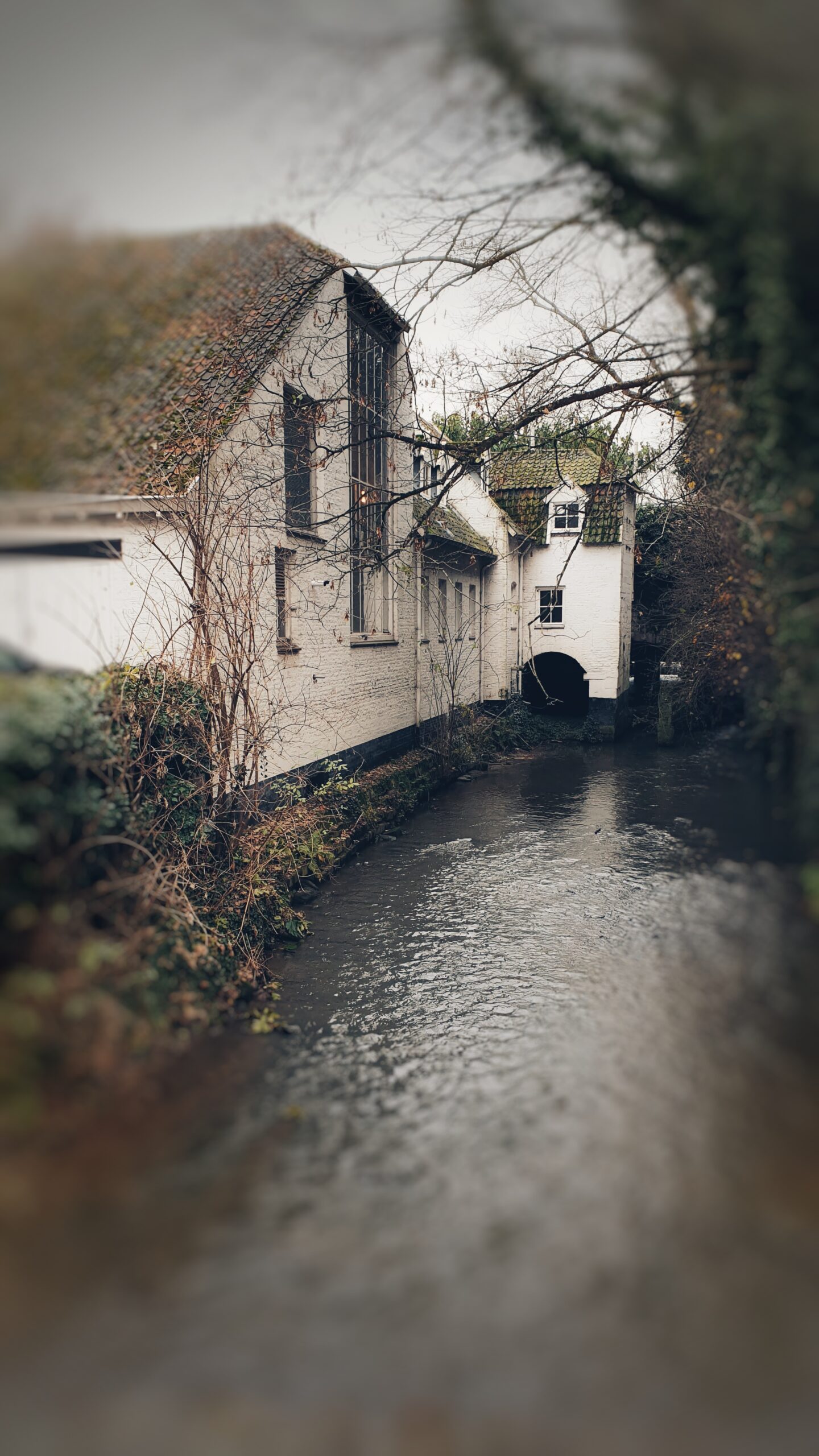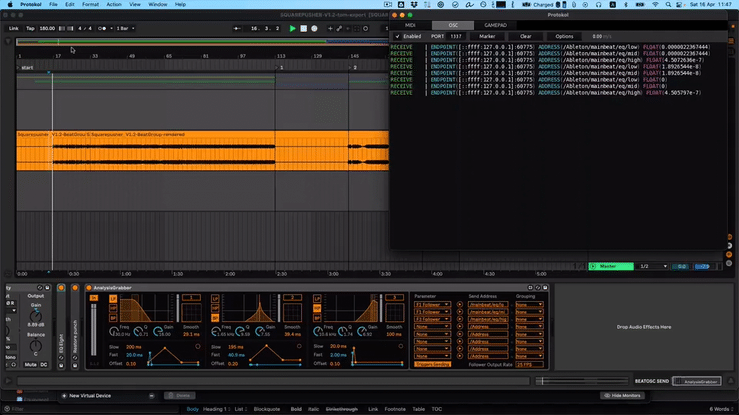My idea for building this rig was to have the possibility to “play” with it as a solo artist and with other musicians. I see my rig more as an instrument in itself rather than a pure effect unit. Together with Julia Warren, an enormously talented sax player, and great improvisator, we booked a day in the studio of the Conservatory in Maastricht.
The plan was to have Julia play into the rig, me looping her and both of us reacting to each others’ sounds. Of course, I also played some bass. But in this setting, I could concentrate on being a “knob twister” or “sound manipulator”.
What were the goals and questions?
- proof of functionality and practicability: Is the rig reliable and portable to set up anywhere and play with it?
- realisation of different improvising concepts: different leaders, building up layers, variations with fast or slow character
- Find out how the responsiveness and reactivity translate in an audience
- What can be improved
Setting / Conditions
- A studio environment seemed to be an optimal place for this research experiment for the following reasons:
- It has a great acoustic, a beautiful vibe and ambiance
- There are great microphones available
- presence of an independent listener (Louis van Eeten) for feedback
- a set timeframe & pressure, similar to a live situation, although not as strict.
- an “external” player / improviser to have more capacity to focus on my setup.
On the day itself, how did it go?
- Everything was packed in its cases and did fit into my car. (I was in a rush, so unfortunately I don’t have any pictures.)
- Setting up my rig went smoothly. It took about 1 hour to set up, measuring and testing audio routing was about 30 minutes. I created a Cubase project with white noise sweeps and sine waves to check that all individual inputs and outputs were connected and leveled correctly.
- For a soundcheck, we did a first improvisation. Musically, it was quite nice, but there was a strange reaction on my Footcontroller. I have four buttons dedicated to recording in four individual loop slots. But they didn’t work at all. Even worse, it did something totally unpredictable and recorded in random tracks and multiple tracks simultaneously. I started to look for the bug in my programming. I could not find the glitch and after one hour of searching, I was devastated and hungry, so I sent Louis and Julia for lunch to have more time. After 30 more minutes, I found the error in the macro.txt file.
this:$b1_mode_1$ = setvar rltr %l1% %rr%/STOP NQ; %rr% / PLAY %recclip2%; msg "rec loop 1";
Had to be this:
$b1_mode_1$ = setvar rltr %l1%; %rr%/STOP NQ; %rr% / PLAY %recclip2%; msg "rec loop 1";
Do you see the difference? Well, it took me quite a while as well… After almost 7 months of programming, testing, and starting from scratch, I now have some routine in debugging and finding errors.
Relieved, I went to grab a bite and then we were finally ready to record.
For each “run”, which we called Chapters, we had different approaches. e.g.:
– Long notes, long build-ups.
– short notes / more staccato
– ambient / dreamy
– driving / groovy
For Chapter 04 we decided to get a drum loop going and to filter it over time. We quickly took a drum loop sample. Nothing fancy, not with many variations in it. The whole session was mainly a proof of concept. It took me a lot of time between having an idea of what to do with an ongoing sound and actually manipulating it with the right pedal etc….
Getting faster and having more muscle memory is probably the field with the greatest potential for improvement.
To me, it was astonishing how time flew. It is really easy to dive in and get lost when making this kind of music, which is a beautiful thing. No chapter was under 10 minutes long.
I filmed everything as well, but I must admit I did not pay enough attention and accurateness while setting up the cameras. Exposure and focus are way off. And then, there was this gigantic mic stand just in front of me. That is why the quality of the video is not as decent as it could have been.
Nevertheless, I am very proud that this session went well and I am even more encouraged to work towards getting this rig on the road…
Thank you, Julia, for taking this exploratory musical path with me. There will be more opportunities soon…
Here are links to the six tracks (Chapters) we recorded:
Chapter 01
Chapter 02
Chapter 03
Chapter 04
Chapter 05
Chapter 06








